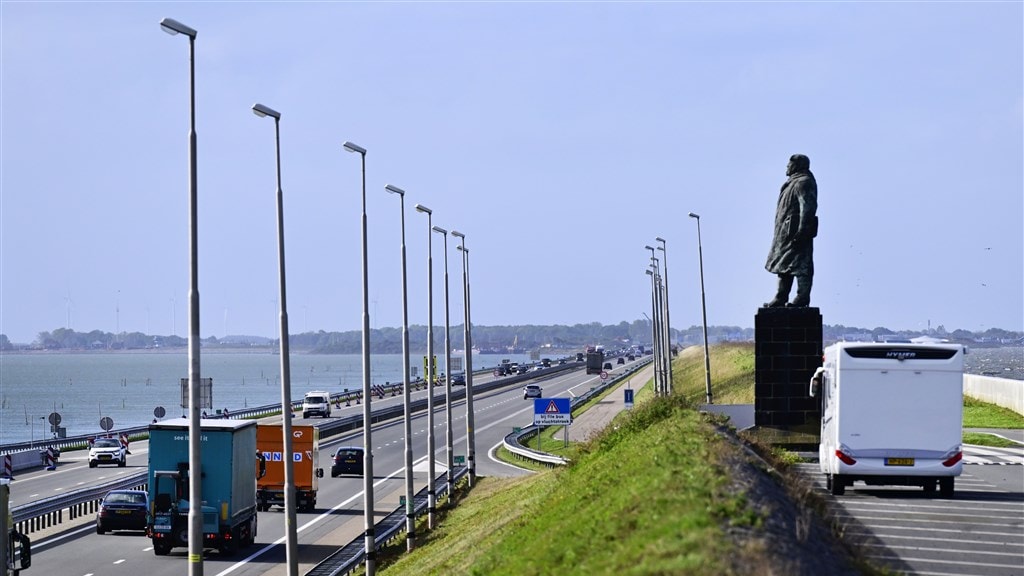Minister Madlener wanted to ignore procedures to introduce 130 km per hour everywhere


It is well known that Minister of Infrastructure Barry Madlener would like to increase the maximum speed to 130 km/h on as many motorways as possible. Not that he wanted to bypass all legal procedures for this. Madlener wanted to take a so-called traffic decision and thus introduce a maximum speed of 130 km/h on all motorways, according to documents made public by the Ministry of Infrastructure, requested by RTL Nieuws.
The documents show that Madlener asked his officials whether it is possible to introduce a 130 km/h speed limit on all Dutch motorways by means of a traffic decision. A traffic decision is the formal decision of one of the bodies that are allowed to do so – in this case the minister – to take a specific physical traffic measure. In this case, the speed increase.
People who objected would then have to start legal proceedings, which would take years.
In the meantime, the speed limit could simply be 130, Madlener's reasoning appears from an email to all members of the '130 working group'. "The minister asked whether he could not simply sign a traffic decision and then 'wait for any objections and lawsuits' (which could take years)."
The officials explained to the PVV minister that such a traffic decision could be quickly annulled and would therefore not be a feasible option. But Madlener did not give up immediately, as is evident from the conversation summary. "He wanted additional explanation about this."
Great pressure putThe released documents also show Madlener's enormous ambition regarding the speed increase to 130 km/h. In an email from a civil servant to a colleague dated 5 July, three days after the Schoof cabinet took office, the first conversation with the new minister about 130 km/h is discussed. "As expected, pressure will be put on this."
In another memo on the speed increase, an official wrote that the minister 'has informally indicated that the speed increase is his first, second and third priority'.
Adverse effectsIn the same memo, the civil servants wrote that they realise that such an increase 'is detrimental to traffic safety, noise, air quality, nitrogen and has only a limited/local effect on travel time'. Despite the minister's ambition, the civil servants decided to focus on the roads where the effect is the least on Natura 2000 areas and does not lead to much more noise pollution. These are only a limited number of roads.
Ultimately, this advice and strategy were followed. Although Madlener wanted to adjust the speed as soon as possible – preferably by 2024 – it would take some time.
Finally, the speed was increased on four sections from April 14. This amounts to 117 kilometers. In total, the Netherlands has 4884 kilometers of highway.
This concerns the following routes:

The maximum speed has been increased to 130 km/h during the day on the A7-Afsluitdijk, between Stevinsluizen and Lorentzsluizen (both directions a total of 44 kilometres), the A7 between the Winschoten junction and the border with Germany (24 kilometres), the A6 between Lelystad-Noord and the Ketelbrug (18 km). The A37 between the Holsloot junction and the Zwartemeer junction (31 km) will follow before the summer.
Watch here the response from coalition party leader Wilders and Van der Plas that it only concerns a few roads where 130 can be driven:
RTL Nieuws




%2Fs3%2Fstatic.nrc.nl%2Fwp-content%2Fuploads%2F2025%2F06%2F01034709%2F529085449.jpg&w=3840&q=100)
%2Fs3%2Fstatic.nrc.nl%2Fwp-content%2Fuploads%2F2025%2F05%2F31222219%2FGermany-Soccer-Champions-League-Final_68209380.jpg&w=3840&q=100)
%2Fs3%2Fstatic.nrc.nl%2Fimages%2Fgn4%2Fstripped%2Fdata133066041-d839bb.jpg&w=3840&q=100)

%2Fs3%2Fstatic.nrc.nl%2Fwp-content%2Fuploads%2F2025%2F05%2F31161932%2Fweb-3105SPO_Yates01.jpg&w=3840&q=100)